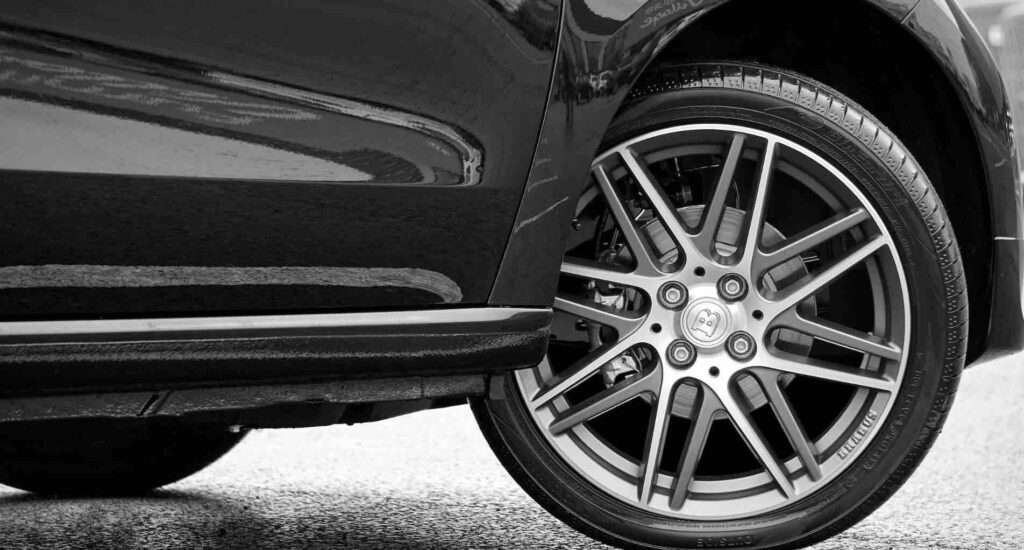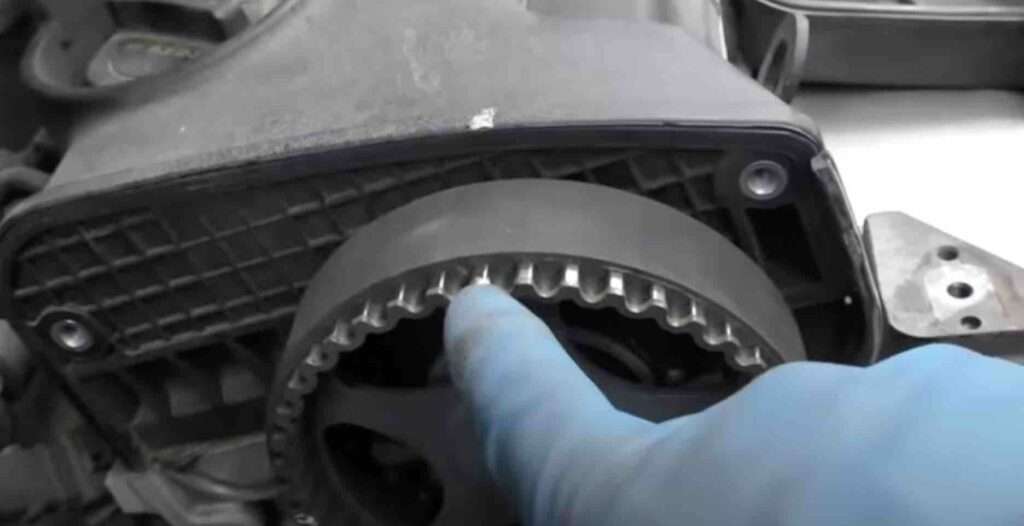Last updated on July 1st, 2023 at 06:33 am
Knowing that the belt tensioner is another engine component, its purpose is crucial for the effectiveness and efficiency of the serpentine belt and other parts.
Perchance, retaining its tension, the belt tensioner permits the serpentine belt to transmit a certain amount of regulated pressure to the pulley. In the same vein, the accessory belts, in turn, spin a couple of pulleys that would be attached to the auxiliary systems. These pulleys include; the alternator pulley, AC compressor pulley, and power steering pulley, to mention a few. All work together to promote a functioning system (engine).
Nevertheless, driving with a bad belt tensioner is unsafe because it can cause numerous problems, such as decreased performance, wear and tear, and catastrophic malfunction of the auxiliary systems. So far, dictating any symptoms for a failing belt tensioner would be vital for your vehicle, and inspection and possible replacement should follow up as soon as possible.
Moreover, this post will help you examine, understand and explore these typical innards, such as; how far can I drive with a bad tensioner pulley, what happens when a belt tensioner fails, how long will a bad belt tensioner last, can I drive with a noisy belt tensioner, what sound does a bad belt tensioner make, and more.
Hopefully, let’s dive into this guide!
Can I Drive With A Noisy Belt Tensioner?
Of course, no, it is not enjoyable! Perchance, you can drive if you risk damaging your vehicle’s accessories and diminishing their performance. However, the loud grinding or squealing noise regarding the belt tensioner’s failure is egregiously annoying or worst when it is a rainy day. Would you? I recommend you shouldn’t attempt it!
What Happens When A Belt Tensioner Fails?
The simple answer is that if your vehicle’s belt tensioner fails, there would be complete dislodging through seizing all components that wholly rely on the belt tensioner for power, which will break down. The breakdown of these components will result in total failure of the engine, leaving you stranded or at the mercy of others to render help to you. As a certified mechanic, I would say be careful to notice the signs or symptoms of a failing belt tensioner on time to avoid disappointment as you travel for a business trip.
Let’s look at the ways of preventing belt tensioner issues!
- Inspect your belts and pulleys regularly. Though if you notice any wear or tear, do an immediate replacement.
- Culture your driving habits; you should be careful to drive on potholes and bumps.
- Keep your tensioner bearings clean from dirt using compressed air.
Necessarily, following the simple tips above, you would prevent your belt tensioner from failing, and you can also prolong its lifespan as it exceeds the required mileage.
How Long Will A Bad Belt Tensioner Last?
Driving your vehicle with a bad belt tensioner is risky and could cause irreparable damage to most parts of your engine. Perchance you decide to move; you can for about a few days or months before a total vehicle breakdown. Similarly, you could also go for fewer thousand miles.
Thus, I recommend you replace your belt tensioner between the 55,000 to 90,000 miles mileage range.
How Much Does It Cost To Replace A Drive Belt Tensioner?
Although it is inevitable for machine parts to fail, for sure, the failure of a drive belt tensioner is catastrophic. However, it takes about $300 to $500 (features and labor cost) to change a drive belt tensioner for a safe and smooth driving experience. You, the driver, must know the mileage at which you would change the belt tensioner.
What Sound Does A Bad Belt Tensioner Make?
As stated in this article, such a situation of having a lousy belt tensioner would constitute displeasure. However, a bad belt tensioner would make a disturbing growling noise. Invariably, it is a warning that your belt tensioner is gone bad.
Can A Bad Belt Tensioner Cause Rough Idle?
Affirmative, it can! Maintaining the required tension on the accessory belt is the primary role of the belt tensioner or, perchance, to enable the engine shaft to work smoothly in your vehicle. So, the car would have a rough idle if it is a bad or lousy belt tensioner. Though, this rough idle can cause a massive sink of your dollar. As regards, there will be a drastic fall to fuel efficiency. Can A Bad Belt Tensioner Cause Rough Idle?
How Do I Know If My Tensioner Pulley Needs To Be Replaced?
Being the key to properly functioning your vehicle’s accessory belt drive system and transferring force to operate other accessories is the primary task of the tensioner pulley. Any failure of this mechanism will result in you replacing the affected parts.
Here are ways/signs to know if your tensioner pulley needs replacement.
1. Issues Of Engine Turn Over
Suppose your engine refuses to turn over properly when you, as the driver, pull the keys, and the vehicle doesn’t roll or wouldn’t even transmit enough power to the combustion chamber as regards the crankshaft. In that case, you should change your vehicle’s tensioner pulley as soon as possible.
2. Valves Malfunction
The malfunction of the valves when your tensioner pully is completely worn-out or torn apart is one of the worst-case situations, thus causing the shaft to work improperly. Similarly, the contact of the valves or the piston would result in the system shutting down.
3. Rough Idle Issue
Your tensioner pulley’s inability to control the rotations and grip the gears of the other components would cause the rough idle issue. So, old and weak belt tensioners are prone to falling inside the gear system, causing this problem. Hence, it would help if you replaced the faulty tensioner pulley.
4. Rattling Sound
The tensioner pulley is attached to the crank and camshaft, which enhances the engine by conveying power to the piston in the combustion chamber. Suppose the engine component makes a rattling or ticking sound; then the tensioner pulley is terrible; you should replace it.
5. Failure Of The Tension Damper
Although, the damping mechanism is vital for controlling vibration and fluctuations in power. If the damper is worn-out, it would not arm the movement or would no longer limit the pressure, which could result in belt or pulley systems slapping against one another. Thus, causing the tensioner pulley to be faulty within a short time. So, if the tension damper fails, it is time you replace the tensioner, also.
6. Loss Of Power And Batter Light On
Suppose the serpentine belt slips or breaks, and the alternator, power steering pump, water pump, and AC compressor would malfunction. Since no turning or tensioner pulley is performing, the battery light will come on, and your vehicle’s steering will become difficult to control. Similarly, the AC compressor will stop functioning due to the failed tensioner pulley. To that effect, you should replace the tensioner pulley.
Conclusion
To summarize this post, it is evident that a lousy belt tensioner could cause numerous issues, such as total vehicle breakdown due to loss of power both by the alternator and the steering control system. The lousy belt tensioner’s effect is that it decreases fuel economy.
Although, if you notice any of the signs or symptoms I have stated above, you should quickly do the replacement based on when you should replace the belt tensioner.
Other ways of identifying that your vehicle’s belt tensioner is lousy are shaking, engine vibration, premature wear and tear of belt and pulleys failed hydraulic tensioner, to mention just a few.
So far, it would be best to consult your manufacturer’s guide before you begin replacement if you are knowledgeable. If not, get a professional mechanic, and with just no time and effort, the mechanic should replace the lousy belt tensioner. Always keep your vehicle running safely and smoothly. Do like and share this guide with others!

Uchenna is a Radiographer and Auto parts mechanic who recently got his automotive diploma as an auto repair technician, and since then, has worked on fixing various car problems.
Working as just a radiographer, Uchenna didn’t just get all the fulfillment he desired, because he truly loved doing things tilted toward cars. As a kid, he would take apart his toy cars to see how they worked and would spend hours tinkering with his bike.
So, in 2017 he made the tough decision to become an auto mechanic. He threw himself into his studies and now loves every aspect of what he does.
He gets to work with his hands, solving problems and bringing cars back to life, and sharing his knowledge and easy quick-fix guide online are all part of what makes him feel fulfilled.




